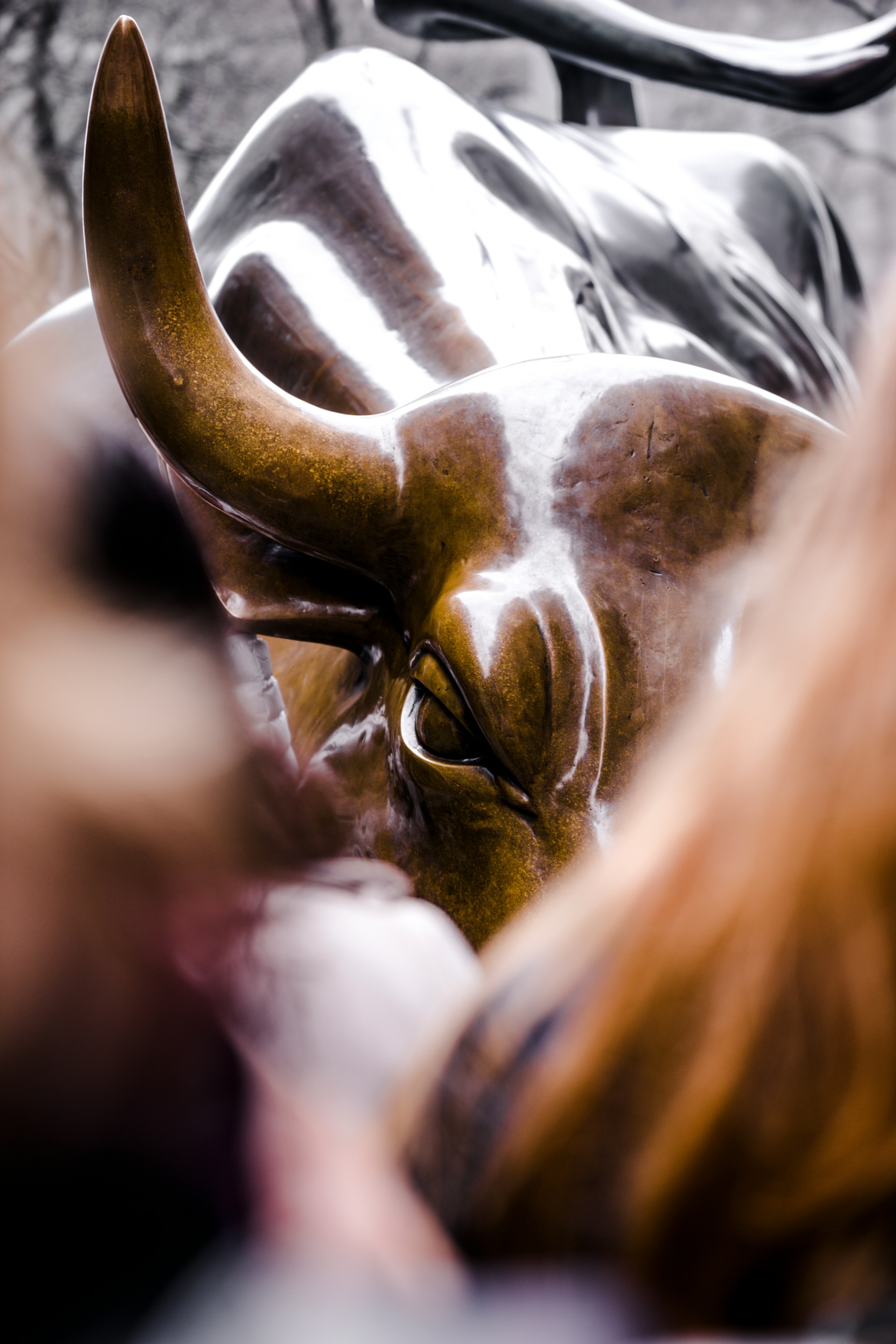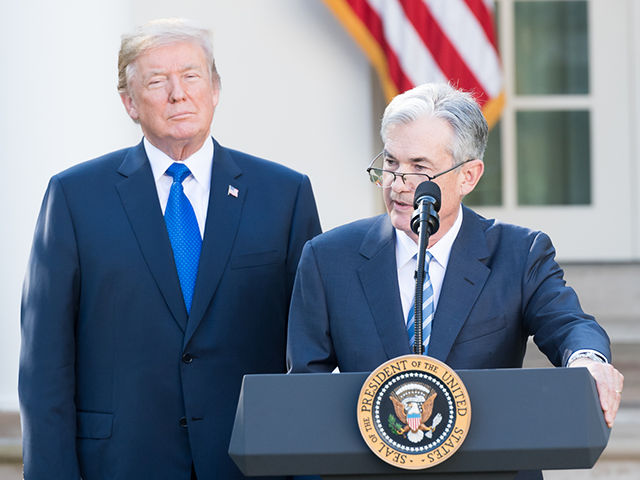When Inflation Goes Low, the Market Gets High
Someone once said that if the Federal Reserve has a reaction function, the market has an over-reaction function.
Evidence for that was on display on Thursday after the Bureau of Labor Statistics released the consumer price index (CPI) for June showing the first decline since May of 2020. Consumer prices unexpectedly fell slightly, and the market priced in a near certainty of a September rate cut.
The surprisingly benign inflation report was certainly a welcome relief. Economists had penciled in a 0.1 percent increase after last month’s flat reading. But instead of picking up again, inflation went into negative territory.

(Photo: Redd F/Unsplash)
The progress was somewhat exaggerated by rounding. The 0.1 percent decline was actually a 0.05619 percent decline before rounding. So, a small movement two digits beyond the decimal point would have produced a second flat month rather than a month of deflation. Probably the best way to look at June is as a second month of zero inflation.
The headline number was dragged down by a steep decline in energy prices, which fell by two percent for the second straight month. That’s not likely to continue for much longer. And the energy decline was driven by a steep 3.8 percent decline in gasoline prices, which followed a 3.6 percent decline in May. Those declines are also unlikely to continue—and may in fact reverse in the month’s ahead.
If we annualize the June numbers, prices fell at a 0.7 percent rate. Over the past three months, the annualized rate is 1.1 percent. The six-month annualized rate works out to 2.8 percent, and 12-month inflation came in at three percent.
Before rounding, the year-0ver-year inflation rate was 2.97563 percent, which is the lowest rate since May of 2021’s 2.61863 percent. But it is only slightly below the 3.05326 percent recorded exactly one year ago. That’s important because it is a reminder that we have been this low before, only to see inflation rise again. Two months after the low of June 2023, we were back up to 3.7 percent.
Core Exercises
Core inflation, which excludes food and energy prices, rose by a mild 0.1 percent. A big part of the slowdown in core is the arrival of the long-awaited disinflation in shelter prices, which rose at the slowest rate they have throughout the Bidenflation era. If we take out shelter to produce what’s sometimes called “core core services inflation,” prices rose 0.9 percent. Three-month annualized core core inflation is at two percent, six-month at 4.8 percent, and 12-month at 4.9 percent.
We like to look at the Cleveland Fed’s measures of median and 16 percent trimmed mean inflation for signs of where underlying inflation is. The one-month median CPI rose 0.2 percent, which matches the previous month. The 16 percent trimmed mean measure also rose 0.2 percent, but this was an acceleration from the previous month’s 0.1 percent. On a year-over-year basis, median CPI is up 4.2 percent, down slightly from 4.3 percent in May, and trimmed mean is up 3.3 percent, down slightly from 3.4 percent in May.
These figures suggest that disinflation was broad-based in June, but they do not support the view that inflation has been overcome or an expectation that prices will continue to tumble. The median CPI figure annualizes to a three percent increase, which is the lowest figure since the prior June, when it was at 2.5 percent. That’s another reminder that we’ve seen inflation fall this low in the past and then reaccelerate.
Given this history of progress and then retreat on inflation, we think the Fed is likely to take a cautious approach. The Fed was caught flat-footed by the return of inflation last year. Indeed, it largely ignored signs of surging inflation for several months in the back half of last year until it became undeniable in the first quarter of this year. This led the Fed to telegraph coming rate cuts—which it then had to walk back.

Federal Reserve Chairman Jerome Powell takes questions after the June 12, 2024, FOMC meeting. (Federal Reserve via Flickr)
The Fed desperately wants to avoid getting inflation wrong again. So, it will likely take several more months of progress before the Fed is comfortable cutting. That almost rules out a September cut, since the Fed will only have two more CPI reports in hand by the September 18 meeting.
The Fed can see how the market is reacting to expectations of a Fed cut. The stock market is at all-time highs, and home prices are as well. This has created very loose financial conditions that could give rise to another burst of higher inflation. Actually cutting rates would likely send asset prices orbital—all but guaranteeing a re-acceleration of inflation.
We’re not the only ones detecting irrational exuberance about rate cuts. Joe LaVorgna, formerly a top Trump administration economist and now chief economist at SMBC Nikko Securities, sent a note out on Thursday warning clients that expectations for a September cut have gone too far.
“Unless the next couple of employment and inflation reports continue to surprise to the downside, investors may have become overly optimistic on the prospect of near-term rate cuts. Having been surprised by the earlier non-transitory nature of inflation and then this year’s first half inflation rebound, monetary policymakers run the risk of being whipsawed by the data. After all, super loose financial conditions are galvanizing aggregate demand in part because of rate cut expectations. Chair Powell understands this. So absent further data softness, market participants may have to adjust their rate cut probabilities accordingly,” LaVorgna wrote.
The Politics of a September Cut Would Be Ugly
Then there are also the political problems that a September rate cut would bring upon the Fed. While Jerome Powell, like his predecessors, insists he is above politics, we think he is deeply concerned with preserving the institutional integrity and independence of the Fed. A rate cut on the eve of the election would inevitably be seen as a partisan political gift to incumbent Joe Biden and would invite backlash from Republicans.
“I think, as I’ve repeatedly said, the commitment to the independence of the Federal Reserve is of utmost importance, and it is critical, especially in a political year like this. Just as — Chair Powell, just as you did in previous administrations, you must not allow politics to cloud the Fed’s monetary policy,” House Financial Services chairman Patrick McHenry (R-NC) said Wednesday, which was no doubt received by Powell as a subtle warning against a rate cut.
“Everybody wants a rate cut,” said Rep. Andy Barr (R-KY). “But I think a September rate cut will not be perceived as apolitical.” Sen. Kevin Cramer (R-ND) issued a similar warning to Powell on Tuesday in the Senate hearing.
Steve Pavlick, a former Trump Treasury official who is now head of policy research at Renaissance Macro Research, wrote in a Thursday client note that if the Fed were to cut in September, we should “expect Trump and Republican lawmakers to seek vengeance.”
Pavlick points out that while Congress has little influence over the Fed’s budget and the president’s ability to oust Powell is limited by statute to “for cause” removal, Congress could make life difficult for the Fed by dragging officials into hearings.
Another possibility that goes unmentioned by Pavlick is that if the Republicans were to sweep in November, this could set the stage for legislative changes to the Fed’s mandate to rein in its discretion on interest rate policy. Many Republicans have in the past voiced support for legislation that would require the Fed to adopt a strict rules based approach to interest rates, perhaps legislating a version of the Taylor rule. Many central banks around the world have a single mandate to control inflation rather than the Fed’s dual mandate, which in practice gives the Fed a lot of discretion about monetary policy.
More interestingly, however, Powell could decide to cut rates in September as an act of political defiance—and then resign in protest if Trump wins anyway.
“As a result, a rate increase may be Powell’s September swan song as he may conclude it is better to retire than face the wrath of Trump and Republican lawmakers by remaining in the role. The prospect of Powell leaving might generate uncertainty that disrupts markets,” Pavlick writes.
While that’s possible, nothing in Powell’s history suggests that he seeks to become a political martyr. We suspect he would take the path of lesser resistance, which would be to simply hold off until the November or December meeting for a rate cut.

COMMENTS
Please let us know if you're having issues with commenting.